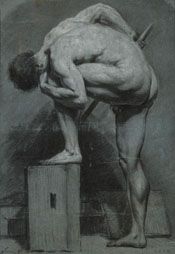 | Since the beginning of art history, the human body has fascinated countless generations of painters and sculptors, becoming since the Antiquity the supreme form of expression. The nude became a genre in itself, being used to represent religious and mythological figures, gods and godesses, legendary heroes and even ideas, despite the reaction of rejection that seldom followed the unveiling of the work. But if for the more conservative the nude was scandalous and sinful, for the artists it was an expression of freedom and human beauty. |
The Crocker Art Museum in Sacramento, USA, will be presenting - starting on the 10th of May and ending on the 27th of July 2008 - an exhibition dedicated to the art of the nude over the centuries, titled "The Language of the Nude: Four Centuries of Drawing the Human Body". It will be an unique event, as it will present around 60 drawings from the museum's own collections, rarely exhibited before, offering visitors a chance of examining and understanding the role played by the nude, the place that it played in the process of creation and especially the ideals that it expressed in European art.
The curators will organise the event in foud distinct sections, tracing the appearance and development of drawing in Italy, the Netherlands, Germany and France, from the 16th to the 19th century. The subjects of the compositions in which nudes were present are varied, ranging from religious themes such as the Crucifixion to mythological episodes, historical or epical ones. The main works, aside the creations of little known artists, are "Funeral of a Hero" by Jacques-Louis David, "Female Nude with a Staff" by Albrecht Durer and a male nude after Michelangelo's composition, "Last Judgement".
Photo : crockerartmuseum.org
2007-07-06

































